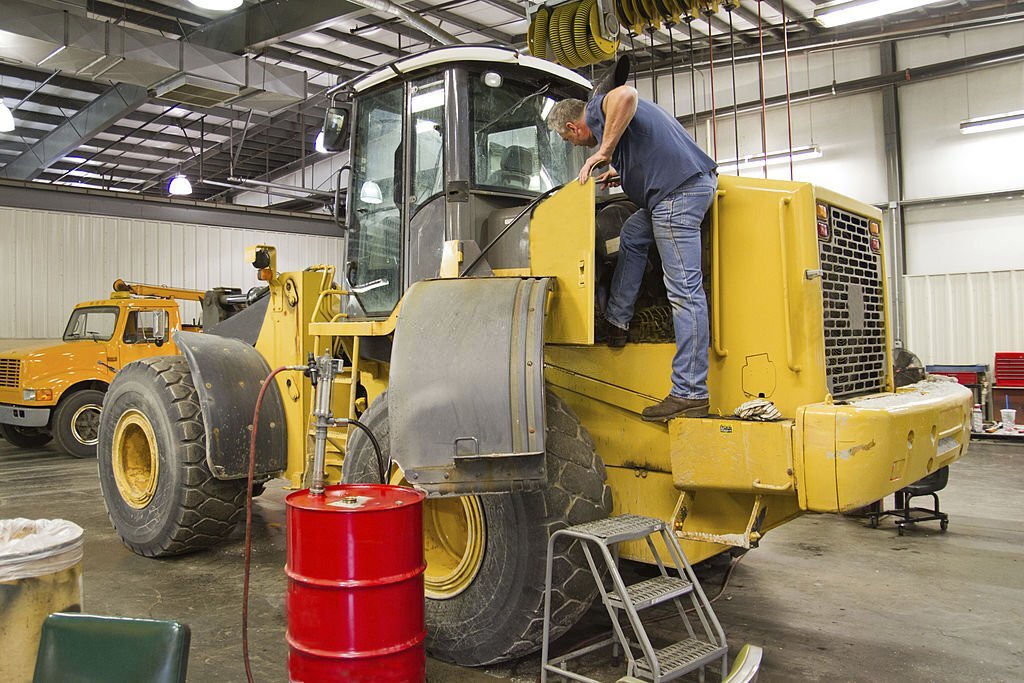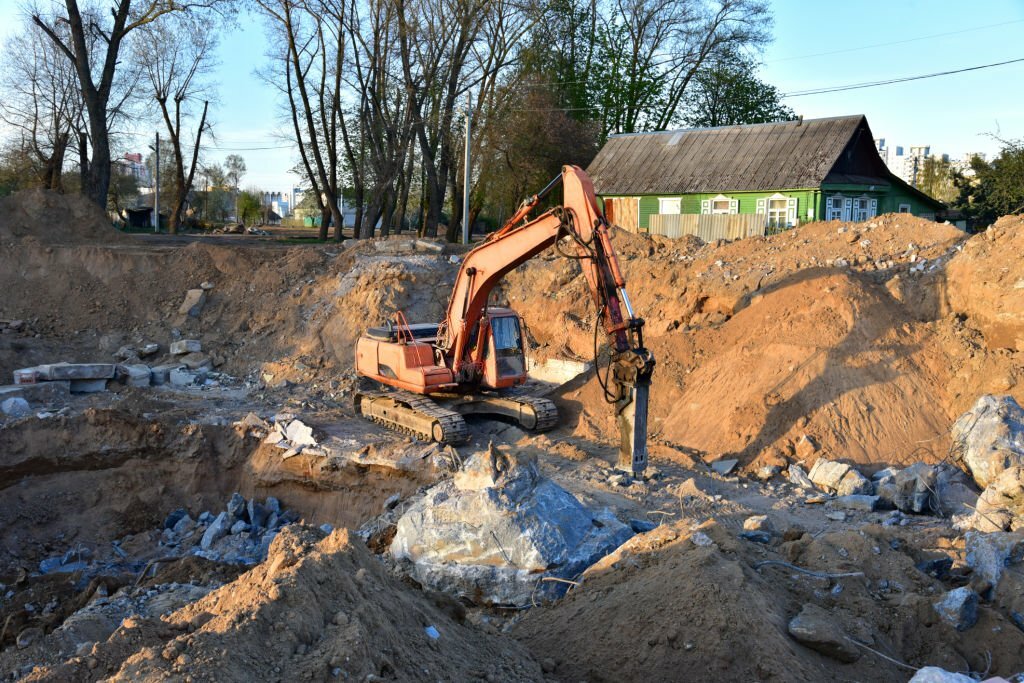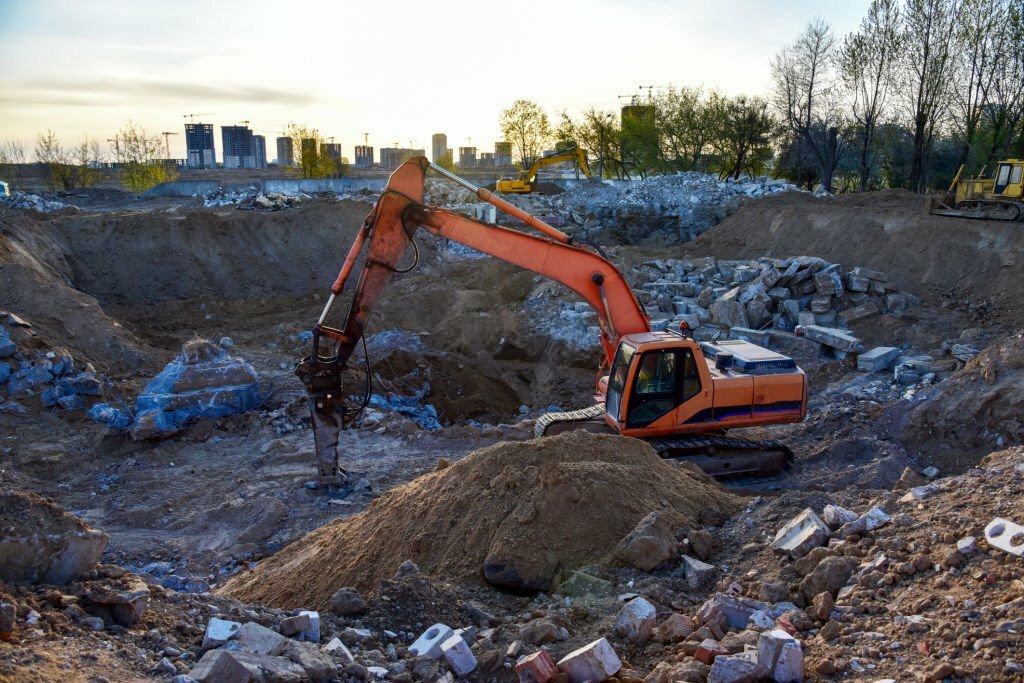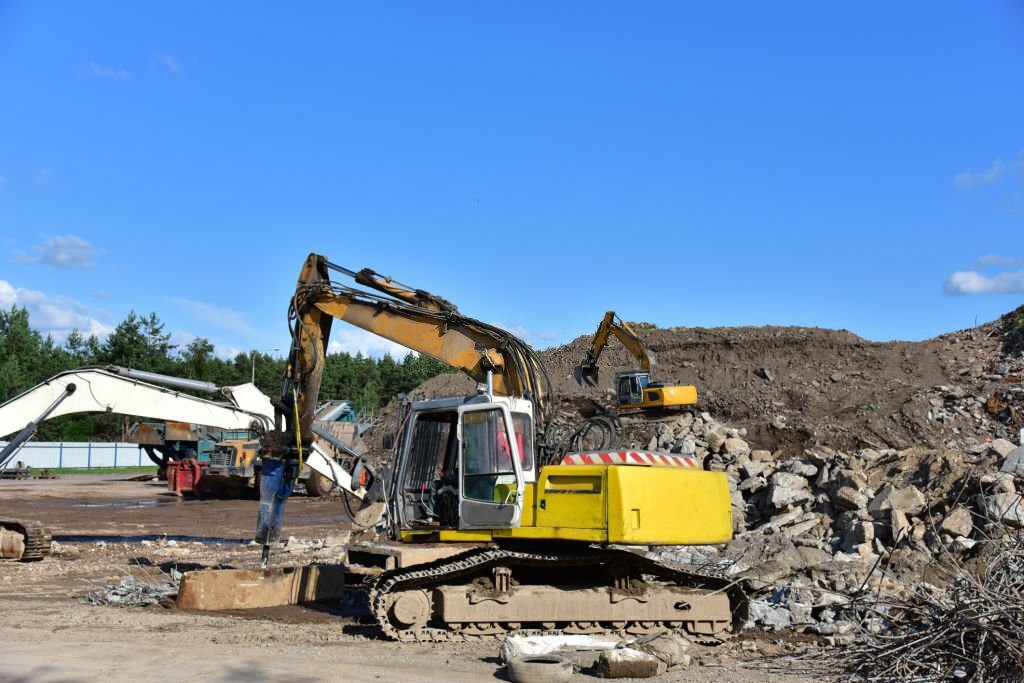The heartbeat of construction projects, construction equipment stands as the indispensable backbone, driving progress and transforming blueprints into tangible structures. Recognizing its pivotal role, the need for meticulous care and attention becomes paramount to ensure not just functionality but optimal performance and longevity. In this in-depth exploration, we peel back the layers of construction equipment maintenance, offering a comprehensive guide that transcends routine checklists. Beyond the nuts and bolts, this guide delves into the essence of care, understanding the symbiotic relationship between maintenance practices and the efficiency of heavy machinery on the bustling construction site.

Unlocking the secrets to extending the lifespan of construction equipment, our insights navigate the intricate landscape of preventive measures, operator empowerment, and the judicious use of technology. As we embark on this journey, the aim is not only to preserve the physical integrity of the machinery but also to enhance its prowess in the dynamic construction environment. This article serves as a beacon for construction professionals, providing a roadmap to not just maintain equipment but elevate it to a state of operational excellence, ensuring that every gear, piston, and joint contributes seamlessly to the symphony of construction site efficiency.
Routine Inspections: The Foundation of Maintenance
At the core of a robust maintenance regimen for construction equipment lies the foundation of regular inspections. Establishing a routine inspection schedule is akin to the heartbeat of proactive care, where a vigilant eye is cast over the intricate machinery that powers construction endeavors. This systematic approach serves as a preemptive strike against potential issues, a crucial step in the quest for equipment longevity and peak performance.
During these inspections, a meticulous examination is imperative, scouring for telltale signs of wear and tear. Loose bolts, the silent harbingers of impending issues, demand immediate attention, as do worn-out components that could compromise the structural integrity of the equipment. A keen eye is also cast towards any subtle signs of fluid leaks, a common precursor to more significant hydraulic or mechanical complications.
Addressing these seemingly minor problems at their inception is the key to preventing major breakdowns. Early intervention not only averts the domino effect that could lead to more extensive damage but also serves as a cost-effective strategy, minimizing downtime and alleviating the financial burden of extensive repairs. In the realm of construction equipment maintenance, the significance of these routine inspections cannot be overstated; they embody the essence of foresight and care, ensuring that each piece of machinery operates with unwavering reliability on the dynamic canvas of a construction site.
Lubrication: The Lifesaver of Moving Parts

In the intricate symphony of construction equipment functionality, proper lubrication emerges as the virtuoso conductor, orchestrating seamless movements and ensuring the harmonious interplay of mechanical components. The significance of this practice cannot be overstated, as it forms the lifeline that sustains the smooth functioning of heavy machinery. The key to this orchestration lies in the regular application of grease to the dynamic components that bear the brunt of operational stress – joints, bearings, and pivots.
A meticulous adherence to the manufacturer’s guidelines becomes the compass guiding this lubrication journey. Following the recommended type and frequency of lubrication is akin to providing the machinery with a tailored elixir, optimizing its performance based on the nuances of design and operational demands. The manufacturer’s wisdom, distilled into these guidelines, serves as a beacon for ensuring not just adequacy but excellence in lubrication practices.
The benefits of well-lubricated machinery extend far beyond the immediate gratification of smooth operations. Reduced wear and tear become the natural byproduct of this diligent care, as each revolution, pivot, and oscillation is cushioned by the protective layer of lubrication. In essence, this routine maintenance ritual not only enhances operational efficiency but becomes a steadfast guardian against the ravages of time, preserving the longevity and reliability of construction equipment in the demanding theater of construction sites.
Fluid Checks: Maintaining the Lifeblood

In the realm of construction equipment, the seamless orchestration of operations hinges on the vital role played by an array of fluids—hydraulic fluids, engine oil, and coolant. To guarantee the continuous and optimal performance of these mechanical behemoths, a routine check of fluid levels is imperative. Topping up these fluids as necessary serves as a preemptive strike against potential disruptions, ensuring that the equipment operates at its peak capacity.
Moreover, the quality of these fluids is of paramount importance. Regularly inspecting and maintaining cleanliness, free from contaminants, is a crucial aspect of fluid care. This meticulous attention not only safeguards proper equipment functionality but also acts as a proactive measure against overheating and potential damage to critical components. In the intricate dance of construction equipment operation, the conscientious management of fluids emerges as a foundational practice, promoting efficiency, reliability, and the longevity of these indispensable machines.
Operator Training: A Proactive Approach

The investment in comprehensive operator training stands as a strategic move with profound implications for equipment maintenance in the construction industry. A well-trained operator is not merely a user but a custodian of the machinery, significantly reducing the risk of wear and tear resulting from misuse. Mastery in correct machinery operation is the first line of defense against potential damages that may arise from operational errors.
However, the benefits of operator training extend beyond operational proficiency. Training programs should encompass not only the nuances of equipment operation but also delve into the realm of routine maintenance procedures. Empowering operators with the knowledge and skills to conduct basic maintenance tasks contributes directly to the overall longevity of the machinery. In essence, a well-trained operator becomes a guardian, steering clear of pitfalls and contributing substantially to the efficiency, reliability, and sustained health of construction equipment on the bustling construction site.
Preventive Maintenance Programs: Anticipating Needs

The implementation of a preventive maintenance program stands as a cornerstone of proactive equipment care in the construction industry. This strategic approach involves the systematic development of a schedule for routine maintenance tasks, constituting a meticulous roadmap for the well-being of heavy machinery. Key elements in this program include scheduled filter replacements, thorough belt inspections, and comprehensive system checks.
The essence of this preventive strategy lies in the commitment to regular servicing, executed at predetermined intervals. This disciplined adherence to a maintenance schedule serves as a preemptive strike against potential issues that could compromise the performance of construction equipment. By identifying and addressing concerns at their nascent stages, this program not only averts the escalation of problems but also contributes significantly to the overall efficiency and reliability of the machinery. In essence, the preventive maintenance program becomes a guardian of operational integrity, ensuring that construction equipment continues to function at its peak, meeting the demanding challenges of the construction site with resilience and dependability.
Cleanliness Matters: Protecting Against Corrosion

Construction sites, by their very nature, unfold as rugged landscapes teeming with dust and dirt, creating an inhospitable environment for heavy machinery. The omnipresent debris becomes a silent adversary, accelerating the wear and tear on vital equipment components. In response to this environmental challenge, a proactive approach involves regular cleaning of machinery to banish the persistent dirt, mud, and contaminants that cling to these mechanical workhorses.
In the pursuit of cleanliness, special attention should be dedicated to crucial elements such as air filters, radiators, and cooling fins. These components, often susceptible to clogging and obstruction, play pivotal roles in maintaining the optimal functionality of the machinery. Beyond the aesthetic benefits of a gleaming appearance, the act of keeping equipment clean serves as a shield against corrosion, safeguarding the integrity of the machinery against the corrosive effects of environmental elements. In this meticulous cleaning ritual, the dual rewards of enhanced appearance and prolonged optimal performance converge, ensuring that construction equipment stands resilient against the adversities of its gritty and demanding working environment.
Storage Practices: Shielding Against the Elements

The significance of proper storage practices for construction equipment becomes particularly pronounced during periods of inactivity. This phase demands meticulous attention to ensure the preservation of these powerful mechanical entities, shielding them from the potential adversities posed by the elements. Sheltering machinery from the capricious interplay of rain, snow, and harsh sunlight stands as a fundamental practice, forming a protective barrier against the corrosive impact of weather-induced damage.
Indoor storage emerges as the optimal choice, offering a controlled environment that shields equipment from the unpredictable whims of weather conditions. However, acknowledging the practical constraints, when indoor storage is not viable, adopting alternative measures becomes imperative. The strategic use of protective covers serves as a pragmatic solution, acting as a frontline defense against the elements. These covers, tailored to fit specific equipment dimensions, provide an additional layer of security, mitigating the risks associated with prolonged exposure.
The crux of these storage practices lies in their ability to safeguard the equipment’s structural integrity during downtime. By shielding against weather-related damage, including rust, corrosion, and the potential degradation of external components, these measures extend beyond preservation; they become a proactive strategy, ensuring that construction equipment emerges from periods of inactivity not just unscathed but primed for optimal performance on construction sites, ready to face the challenges of the next project with resilience and efficiency.
Monitor Equipment Usage: Preventing Overwork

In the intricate realm of construction, where heavy machinery reigns supreme, vigilant monitoring of equipment usage emerges as an imperative practice. Each piece of construction equipment bears its unique operational thresholds, and regular scrutiny of utilization becomes the linchpin in preventing the perilous consequences of overworking. The specter of overexertion poses a multifaceted risk, from precipitating premature wear and heightened fuel consumption to casting the ominous shadow of potential breakdowns.
Overloading, in particular, stands as a formidable adversary to machinery health, capable of compromising structural integrity and operational efficiency. The adherence to recommended usage limits becomes the guiding principle, acting as a proactive shield that maintains machinery within its meticulously designed parameters. This conscientious approach transcends the realm of mere wear and tear prevention; it metamorphoses into a strategic investment in the longevity of construction equipment.
Respecting prescribed operational limits is the cornerstone upon which construction professionals build a foundation for sustained efficiency, reduced maintenance costs, and a machinery fleet that navigates the rigors of construction projects with enduring reliability and resilience. It is a pledge to the durability and steadfast performance of these mechanical workhorses in the dynamic landscape of construction endeavors.
Documenting Maintenance: A Record of Care

The meticulous maintenance of detailed records stands as a cardinal practice in the realm of construction equipment care. Documenting every facet of maintenance activities, from routine inspections to repairs and replacements, serves as a dynamic tool that transcends mere record-keeping. These comprehensive records encapsulate the history of each piece of equipment, acting as a navigational compass for future maintenance endeavors.
Beyond serving as an archival repository, these records emerge as strategic assets in the planning of upcoming maintenance tasks. They become the roadmap, offering valuable insights into the overall health of machinery and facilitating the identification of patterns or recurring issues. In the intricate dance of construction equipment care, these records transcend their status as mere documentation; they transform into instrumental tools that empower construction professionals with the foresight to proactively address challenges, ensuring that each piece of machinery operates with sustained efficiency and reliability on the bustling construction site.
Collaborate with Manufacturer Support: Expert Guidance

Cultivating a symbiotic relationship with equipment manufacturers proves to be an invaluable asset in the realm of equipment care within the construction industry. Establishing a direct line of communication with your equipment manufacturer serves as a strategic alliance, allowing construction professionals to leverage the wealth of expertise they offer in maintenance advice. This collaboration extends beyond mere consultation; it involves a commitment to adhering to recommended service intervals, utilizing genuine replacement parts, and seeking precise guidance on specific care requirements.
Manufacturer support acts as a guiding compass, ensuring that maintenance efforts align harmoniously with the intricacies of the equipment’s design and specifications. The manufacturer’s insights become the cornerstone upon which effective care strategies are built, promoting not only the longevity of the machinery but also its optimal functionality. In this partnership, construction professionals are not merely consumers but active participants in a shared commitment to sustaining the health and efficiency of construction equipment within the dynamic landscape of construction projects.
Conclusion: A Blueprint for Longevity
In the dynamic world of construction, where time is money and efficiency is paramount, the maintenance and care of construction equipment emerge as non-negotiable factors. By implementing a proactive maintenance strategy, construction companies can not only extend the lifespan of their machinery but also optimize its performance on the field. Routine inspections, proper lubrication, fluid checks, operator training, preventive maintenance programs, cleanliness, storage practices, monitoring equipment usage, and documentation collectively form a comprehensive blueprint for the longevity of construction equipment. As the industry evolves, adopting these maintenance and care tips ensures that heavy machinery remains not just a tool but a reliable and efficient partner in the construction journey.

